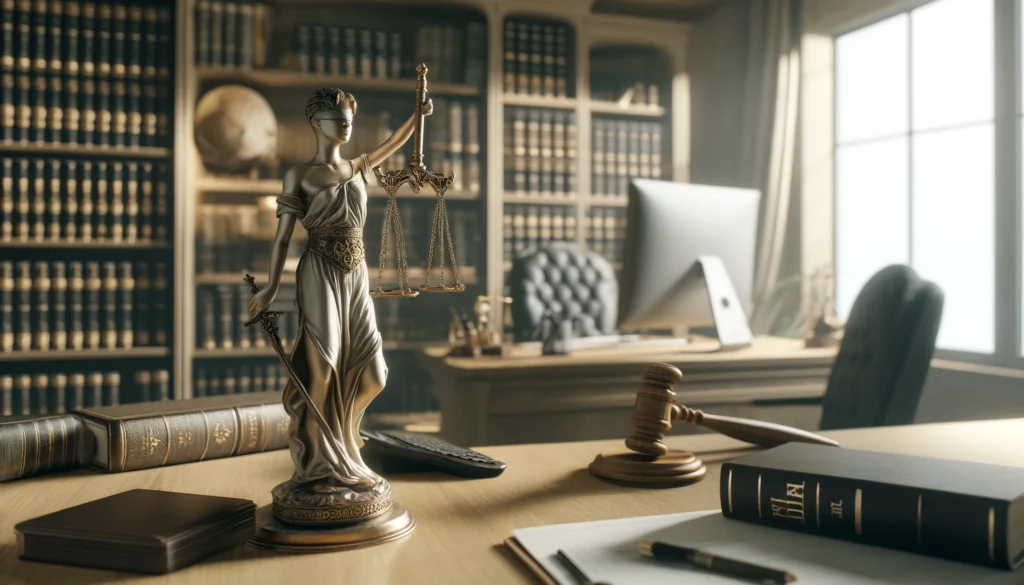
Introduction
In the rapidly evolving legal landscape, artificial intelligence (AI) is increasingly becoming an indispensable tool for legal professionals. Among the latest AI advancements, ChatGPT, a powerful language model developed by OpenAI, stands out for its ability to generate human-like text and assist with a wide array of tasks. For paralegals, ChatGPT can be a valuable asset in streamlining day-to-day work, particularly when it comes to drafting compelling motions to suppress evidence.
Motions to suppress evidence play a crucial role in shaping the outcome of legal proceedings. By successfully arguing for the exclusion of improperly obtained or unreliable evidence, defense attorneys can significantly weaken the prosecution’s case. As a result, paralegals are often tasked with conducting thorough research and drafting persuasive motions on behalf of their clients. This article will explore how ChatGPT can be leveraged to enhance the efficiency and effectiveness of this process.
In the following sections, we will delve into the intricacies of motions to suppress evidence, the ethical considerations surrounding their use, and practical techniques for harnessing the power of ChatGPT to create well-reasoned and compelling arguments. By the end of this article, paralegals should be well-equipped to integrate this cutting-edge AI tool into their workflow, ultimately saving time and improving the quality of their work.
With a solid understanding of the basics, let us first examine the underlying principles of motions to suppress evidence and their importance in the legal system.
Understanding Motions to Suppress Evidence
Having introduced the potential of ChatGPT in the legal field, it is essential to first establish a clear understanding of motions to suppress evidence and their significance in legal proceedings. These motions serve as a critical safeguard against the admission of improperly obtained or unreliable evidence, ensuring that the rights of the accused are protected throughout the legal process.
A motion to suppress evidence is a formal request made by a defense attorney, asking the court to exclude specific pieces of evidence from consideration during trial. The primary goal of such motions is to prevent the prosecution from presenting evidence that has been obtained in violation of the defendant’s constitutional rights or is otherwise unreliable. Common grounds for suppression motions include:
- Unlawful search and seizure: Evidence obtained through a search or seizure that violates the Fourth Amendment’s protection against unreasonable searches and seizures may be subject to suppression.
- Violation of Miranda rights: Statements made by a defendant while in custody may be suppressed if law enforcement officers failed to provide proper Miranda warnings, which inform the defendant of their right to remain silent and to have an attorney present during questioning.
- Chain of custody issues: If the prosecution cannot demonstrate a clear and unbroken chain of custody for a piece of evidence, its authenticity and reliability may be called into question, potentially leading to its suppression.
- Fruit of the poisonous tree: This legal doctrine holds that evidence obtained as a direct result of an initial illegal action (e.g., an unlawful search) may also be subject to suppression.
Successfully arguing a motion to suppress evidence can have a significant impact on the outcome of a case, as it may weaken the prosecution’s ability to prove their case beyond a reasonable doubt. With this foundation in place, it is crucial to consider the ethical implications surrounding the use of suppression motions and AI tools in legal proceedings. The next section will delve into these considerations, ensuring that paralegals approach their work with a keen awareness of the ethical guidelines that govern their profession.
Ethical Considerations in Crafting Motions to Suppress Evidence
As paralegals embrace the use of AI tools like ChatGPT in their work, it is essential to remain mindful of the ethical considerations that underpin the legal profession. Adhering to ethical guidelines is not only a professional obligation but also a crucial aspect of maintaining the integrity of the legal system. When crafting motions to suppress evidence, paralegals must be particularly vigilant in upholding ethical standards to avoid any misuse of AI tools or unethical practices.
- Candor towards the tribunal: Paralegals must ensure that all information presented to the court is truthful and accurate. This includes avoiding misrepresentations of fact or law, as well as refraining from offering evidence that the paralegal knows, or should know, to be false.
- Fairness to opposing parties: Paralegals should not engage in any conduct that is intended to harass, delay, or unnecessarily increase the cost of litigation for the opposing party. This includes avoiding frivolous motions or arguments that have no substantial basis in law or fact.
- Confidentiality: Paralegals must protect the confidentiality of client information and ensure that AI tools, like ChatGPT, are used in a manner that does not compromise sensitive data.
- Competence: Paralegals should strive to maintain the requisite level of knowledge and skill in their work, including staying informed about the benefits and limitations of AI tools and their appropriate use in legal proceedings.
It is important to note that this article does not promote misuse of AI tools or unethical practices in legal proceedings. Instead, it aims to provide paralegals with practical guidance on leveraging ChatGPT to enhance their work while adhering to the ethical guidelines that govern their profession.
With a solid understanding of the ethical considerations surrounding motions to suppress evidence, the next section will explore how ChatGPT can be effectively utilized for legal research, laying the groundwork for crafting compelling suppression motions.
Leveraging ChatGPT for Legal Research
Legal research forms the backbone of any successful motion to suppress evidence. Paralegals must identify and analyze relevant case law, statutes, and legal principles to build a strong foundation for their arguments. ChatGPT can significantly streamline this process by assisting in the identification and analysis of pertinent legal materials.
- Formulating effective prompts: To harness the power of ChatGPT for legal research, paralegals should begin by crafting clear and specific prompts related to their suppression motion. For example, a paralegal working on a motion based on an unlawful search and seizure might ask, “What are the key cases interpreting the Fourth Amendment’s protection against unreasonable searches and seizures in the context of motor vehicles?”
- Gathering relevant case law and statutes: ChatGPT can generate a list of relevant cases, statutes, and legal principles based on the provided prompt. Paralegals can then review and analyze these materials to determine their applicability to the specific circumstances of their case.
- Analyzing and organizing research findings: ChatGPT can also assist in breaking down complex legal concepts and analyzing the potential implications of specific cases or statutes. Paralegals can use the AI tool to help identify patterns, inconsistencies, or notable distinctions in the law that may strengthen their suppression motion.
To maximize the efficiency of legal research with ChatGPT, paralegals should consider the following tips:
- Iterate and refine prompts: As the research progresses, paralegals should continually refine their prompts to ensure they are capturing the most relevant and up-to-date information.
- Verify AI-generated information: While ChatGPT can be a valuable resource, paralegals should always verify the accuracy of AI-generated information through traditional research methods and reliable sources.
- Stay organized: Effective legal research requires careful organization of materials. Paralegals should develop a system for cataloging and summarizing relevant cases, statutes, and legal principles to facilitate easy reference during the drafting process.
With a solid foundation in legal research, paralegals can move on to drafting compelling motions to suppress evidence with the assistance of ChatGPT. The next section will provide practical guidance on creating effective prompts and techniques for refining AI-generated text to create persuasive arguments tailored to specific cases.
Drafting Motions to Suppress Evidence with ChatGPT
Once paralegals have conducted thorough legal research, the next step is to draft a compelling motion to suppress evidence. ChatGPT can be an invaluable tool in this process, generating draft motion language and providing suggestions for structuring arguments. Here are some guidelines for creating effective prompts and techniques for refining AI-generated text to create persuasive arguments tailored to specific cases.
Creating effective prompts for draft language: To generate draft language for a suppression motion, paralegals should provide ChatGPT with a clear and specific prompt that outlines the basis for the motion and the desired outcome. For example:
“Draft a motion to suppress evidence based on an unlawful search and seizure of a motor vehicle, citing relevant case law such as Arizona v. Gant and Missouri v. McNeely, and arguing that the warrantless search was not justified by any applicable exceptions to the Fourth Amendment’s warrant requirement.”
- Tailoring the generated text to specific cases: ChatGPT-generated draft language will likely require some customization to fit the unique facts and circumstances of each case. Paralegals should carefully review and edit the AI-generated text, incorporating case-specific details and adjusting the argument as needed.
- Structuring the motion: A well-structured motion to suppress evidence should include the following elements:
- Title: Clearly state the type of motion and the relief sought (e.g., “Motion to Suppress Evidence Obtained Through Unlawful Search and Seizure”).
- Introduction: Briefly outline the basis for the motion and the relief sought.
- Factual background: Provide a concise summary of the relevant facts, focusing on those that support the argument for suppression.
- Legal argument: Present a clear and persuasive argument for why the evidence should be suppressed, citing relevant case law and statutes.
- Conclusion: Reiterate the relief sought and emphasize the importance of granting the motion to protect the defendant’s constitutional rights.
- Refining and polishing the motion: After tailoring the AI-generated text to the specific case, paralegals should carefully review and revise the motion to ensure clarity, coherence, and persuasiveness. This may involve reorganizing sections, refining the argument, or adding additional supporting evidence as needed.
Sample prompt for refining the motion:
“Review and provide suggestions for improving the following motion to suppress evidence, focusing on clarity, coherence, and persuasiveness, as well as ensuring that the argument is well-supported by relevant case law and statutes.”
By leveraging ChatGPT for drafting motions to suppress evidence, paralegals can save time and produce more effective arguments. The next section will discuss how ChatGPT can also assist in reviewing and editing these motions to ensure the highest quality and maximum impact.
Reviewing and Editing Motions with ChatGPT
After drafting a motion to suppress evidence, it is crucial to review and edit the document to ensure clarity, coherence, and compliance with legal standards. ChatGPT can be a valuable tool in this process, providing suggestions for improvement and helping paralegals refine their arguments. Here are some techniques for using ChatGPT to review and edit motions effectively.
- Proofreading and editing for grammar and syntax: ChatGPT can help identify and correct grammatical errors, punctuation mistakes, and awkward phrasing in the motion. Paralegals can provide the AI with a simple prompt, such as:
“Proofread and edit the following motion to suppress evidence for grammar, punctuation, and syntax errors.”
- Ensuring logical flow and coherence: A well-organized motion should present a clear and logical argument that is easy for the reader to follow. Paralegals can use ChatGPT to assess the overall structure and flow of their motion, as well as to identify any areas that may require reorganization or clarification. Sample prompt:
“Analyze the structure and flow of the following motion to suppress evidence, and provide suggestions for improving its logical progression and coherence.”
- Verifying consistency and accuracy: ChatGPT can assist in checking the consistency and accuracy of the motion, ensuring that all facts, case law, and statutes are cited correctly and support the argument being made. Paralegals can request the AI to verify specific elements of the motion, such as:
“Check the accuracy of the citations and the application of case law in the following motion to suppress evidence.”
- Enhancing persuasiveness: ChatGPT can provide suggestions for strengthening the argument and making the motion more persuasive. This may involve emphasizing key points, addressing potential counterarguments, or incorporating additional supporting evidence. Sample prompt:
“Provide suggestions for enhancing the persuasiveness of the following motion to suppress evidence, focusing on the argument’s clarity, logic, and use of supporting case law and statutes.”
By leveraging ChatGPT for reviewing and editing motions to suppress evidence, paralegals can ensure that their arguments are polished, well-supported, and maximally persuasive. The next section will discuss best practices for paralegals using ChatGPT and other AI tools in their day-to-day work.
Best Practices for Paralegals Using ChatGPT
Integrating ChatGPT and other AI tools into their workflow can help paralegals streamline tasks, save time, and produce higher-quality work. To make the most of these tools, paralegals should follow best practices that ensure efficiency, accuracy, and ethical compliance. Here are some key recommendations for using ChatGPT effectively in day-to-day work:
- Set clear objectives: Before using ChatGPT, paralegals should have a clear understanding of what they hope to accomplish. This might involve drafting a motion, conducting legal research, or reviewing and editing a document. Setting clear objectives will help paralegals create effective prompts and make the best use of the AI’s capabilities.
- Craft specific prompts: To obtain the most accurate and relevant results from ChatGPT, paralegals should provide detailed and specific prompts. Vague or overly broad prompts may result in less useful or irrelevant information. Including relevant context and background information can also help improve the AI’s output.
- Verify AI-generated information: While ChatGPT can be a valuable resource, it is essential to verify the accuracy of the information it provides. Paralegals should cross-reference AI-generated content with reliable sources, such as case law, statutes, and legal treatises, to ensure that the information is correct and up-to-date.
- Maintain confidentiality and security: Paralegals must protect sensitive client information when using AI tools. This may involve using secure platforms, anonymizing data, or obtaining client consent before sharing information with AI systems.
- Stay up-to-date with AI developments: As AI technology continues to evolve, paralegals should stay informed about new tools, features, and best practices. Regularly updating their knowledge and skills will help paralegals make the most of AI in their work and maintain a competitive edge.
- Combine AI with human expertise: While AI tools like ChatGPT can be incredibly useful, they are not a substitute for human judgment and expertise. Paralegals should use AI to augment their work, rather than relying on it exclusively. By combining AI-generated content with their own knowledge and experience, paralegals can produce high-quality work that is tailored to their clients’ needs.
- Adhere to ethical guidelines: When using AI tools, paralegals must continue to adhere to ethical guidelines and professional standards. This includes ensuring the accuracy and integrity of their work, protecting client confidentiality, and avoiding any misuse of AI-generated information.
By following these best practices, paralegals can effectively leverage ChatGPT and other AI tools to enhance their work, improve efficiency, and provide better service to their clients. The next and final section will provide a conclusion, summarizing the key points discussed in this article.
Conclusion
In conclusion, ChatGPT and other AI tools offer paralegals a powerful means to streamline their work, enhance their research capabilities, and produce high-quality motions to suppress evidence. By understanding the ethical considerations, crafting effective prompts, and following best practices, paralegals can harness the potential of AI to improve their day-to-day tasks and better serve their clients. As AI technology continues to evolve, staying informed and adapting to new developments will be essential for paralegals to maintain a competitive edge in the legal field. Embracing AI as a complement to human expertise will enable paralegals to provide even more value to their clients and contribute to the overall success of their legal teams.


